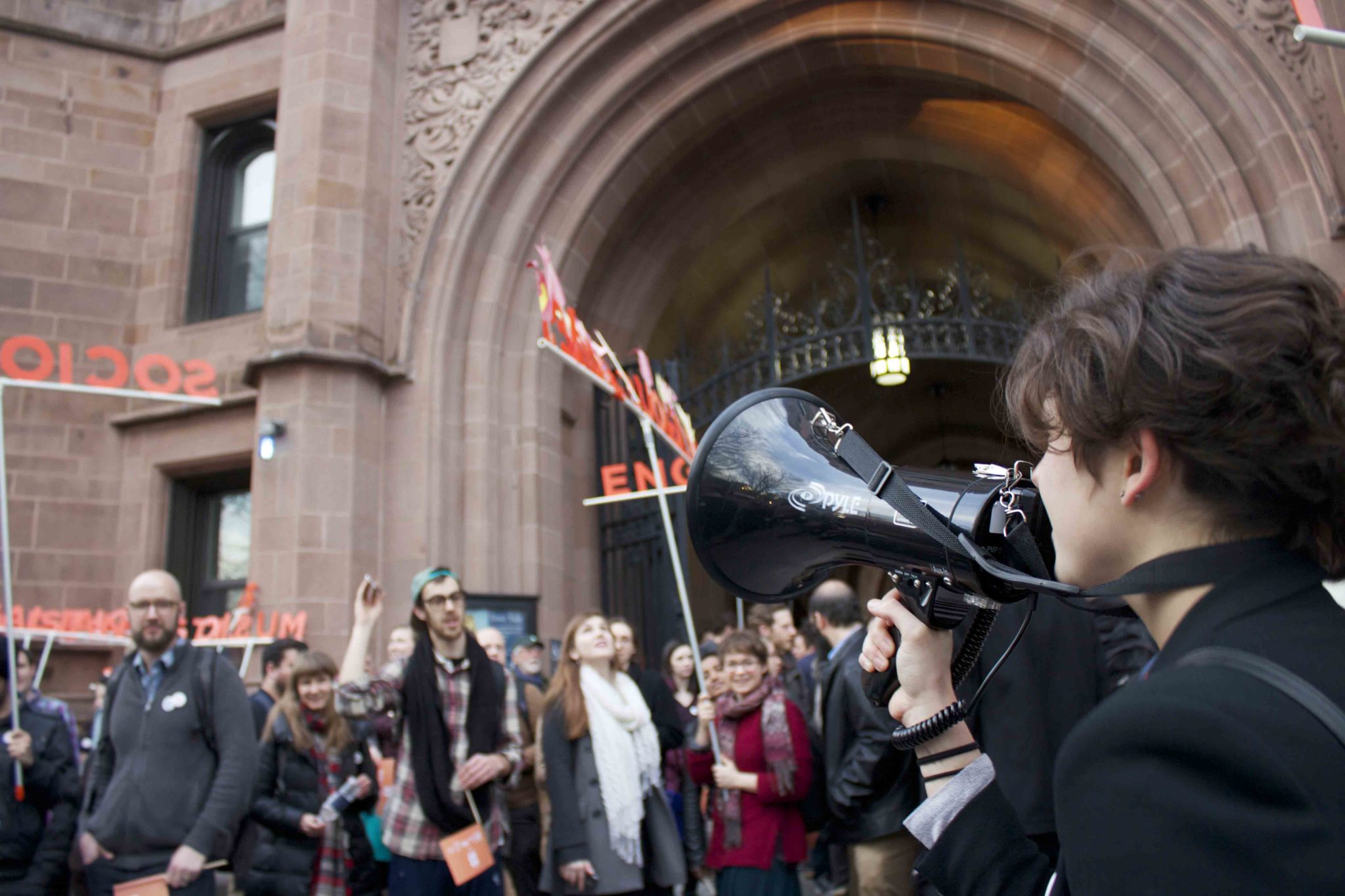
Graduate student union Local 33 has withdrawn its petitions to represent students in the eight departments of the Graduate School of Arts and Sciences that voted to unionize a year ago.
The withdrawal of the National Labor Relations Board petitions comes after a yearlong standoff between Local 33 and the University, during which the union hosted numerous marches and rallies, as well as a widely publicized hunger strike on Beinecke Plaza to protest Yale’s refusal to bargain with the union despite its successful, legally sanctioned elections last February. But just two days before a U.S. Senate Health, Education, Labor and Pensions Committee vote on the appointment of President Donald Trump’s nomination to fill the vacant fifth seat on the NLRB, the graduate student group has taken a major step back in its decades-long struggle to become a recognized union. Local 33 co-president Robin Dawson GRD ’19 said the union withdrew its petitions because it did not believe that the conservative, Trump-led NLRB would be sympathetic to its cause.
“President Trump’s NLRB has repeatedly demonstrated its hostility to workers’ rights,” Dawson wrote in an email to the News. “We continue to call on the Yale administration to address graduate teacher concerns and stand with the labor movement and against the Trump administration stripping us and thousands of other workers of our rights.”
Yale received notice of the withdrawals on Monday. “The University has steadfastly maintained that Local 33’s micro-unit strategy was inappropriate and that the departmental elections were undemocratic,” University spokeswoman Karen Peart said in a statement to the News. “Yale remains deeply committed to graduate student education, and to providing its teaching fellows with the mentorship and training necessary to complete their degrees and go on to rewarding careers.”
In the coming days, the NLRB will likely assume a Republican-appointed and pro-management majority, with a Senate committee slated to vote on business lawyer John Ring’s nomination for the fifth and final vacant seat on the board this Wednesday. This will ensure a conservative majority on the NLRB until at least 2020. The Senate approved three other Trump appointees to the board last year, including two board members — one of whom Trump appointed as chairman — and one general counsel member.
A conservative-leaning NLRB could potentially overturn the landmark 2016 NLRB decision ruling that gave graduate students at Columbia University the right to unionize. Indeed, if it had come before the full board, Local 33’s case might have given the NLRB the opportunity to reverse that decision.
In February 2016, eight departments voted to unionize under the auspices of Local 33, using a controversial micro-unit strategy untested on other campuses. That strategy allowed Local 33 to handpick specific Graduate School of Arts and Science departments in which to hold unionization votes, meaning it could choose departments where support for unionization was highest. Yale has argued repeatedly that the results of the micro-unit vote do not represent the general sentiment of Yale’s graduate students because the eight departments that voted to unionize contain less than 10 percent of the University’s total graduate student population.
The legal validity of Local 33’s organizing strategy in the unionization vote last February hinged on precedent set by the 2011 Specialty Healthcare & Rehabilitation Center of Mobile decision. The controversial ruling legitimized union elections held in “micro-units” or small subsets of employees. Yale and Local 33 clashed over whether the precedent should apply to academic departments. Although a regional branch of the NLRB last year allowed Local 33 to hold departmental elections, the union’s cause was dealt a serious blow last December when the NLRB overturned the Specialty Healthcare decision.
The University refused to come to the negotiating table while it waited on an appeal to the NLRB filed last April challenging the legal basis of the February 2017 micro-unit votes.
Now Local 33’s future is murky. Dawson did not respond to questions late Monday night about the union’s plans for the future.
Former NLRB chairman William Gould said Local 33’s withdrawal might have been prompted by the board’s reversal on the micro-unit strategy.
“The new Trump board has already reversed themselves on the micro-unit issue,” Gould said. “There is no avenue open for them at Yale.”
Local 33 now faces two options, according to Gould — either abandon its micro-unit strategy and hold a traditional, school-wide unionization vote, or begin negotiating with the University in a private setting. The second alternative is less viable since Yale has maintained a “hostile” attitude toward Local 33, Gould said.
In recent times, Local 33 has grappled with growing internal discord. Last month, more than 80 students affiliated with the union signed an online petition expressing distrust for Local 33 leadership and declaring the formation of a new group called The Union We Want.
The Graduate Employees and Students Organization rebranded itself as Local 33 in March 2016.
Jingyi Cui | jingyi.cui@yale.edu
Hailey Fuchs | hailey.fuchs@yale.edu







